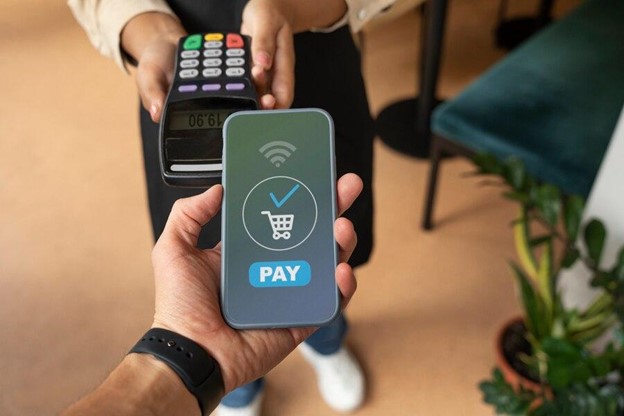Payment Gateways for UAE Startups: Everything You Need to Know

A recent news release from the Ministry of Economy – UAE clearly indicates the country’s superiority in attracting venture capital investments in the Middle East and Africa region. In fact, startups here managed to draw capital worth AED 4.3 billion last year. So, the time is undoubtedly right to hop on the bandwagon and start the business you have always dreamed of or take your existing one to new heights. However, catering to the modern customer requires you to embrace the digital world and make the shopping experience completely smooth and hassle-free. Consider payment gateway providers in UAE to rise to the occasion.
A payment gateway is essentially instrumental in making it easy for customers to purchase anything online and pay securely via bank transfers, debit/credit cards, or digital wallets. It takes seconds for a gateway to process a payment from the moment a customer places an order and submits card information to the instant the card-issuing bank approves the request and the order is fulfilled. The best online payment solutions for UAE businesses ensure seamless data encryption and protect the sensitive information of both parties involved. Are you ready to learn more about the benefits of adopting a payment gateway and how you can pick the right one? Read on to learn more.
Why Embracing a Payment Gateway is the Right Move
If you are looking to welcome brand new opportunities as a seller while easing the lives of customers, there are plenty of online payment solutions for UAE businesses that can come in handy. This is also what you need in a dynamic ecommerce landscape where more and more people are using digital devices to buy everything from clothes and household appliances to groceries and cosmetics. When you adopt a payment gateway, you can expect the following benefits —
- Security Gets Better: When you keep all information associated with digital transactions safe, your repute as a seller shoots up. And payment gateway providers in UAE understand that. With a reliable gateway, neither you nor buyers have to stress about fraudsters and cyberattacks. Top providers in the UAE make use of sophisticated encryption techniques and robust protocols to prevent data breaches and spot suspicious activities on time.
- Customer Experience Improves: To stay ahead of the competition, you need to earn your customer’s trust and confidence and forge a connection fast. And providing them with a choice in payment modes is a great way to do that. Shoppers will appreciate the flexibility, and the checkout process will become more efficient, faster, and smoother.
- Revenue Grows by Leaps: When you use a payment gateway, you attract all kinds of customers, whether they prefer using Internet banking, cards, or e-wallets. You can reach out to more demographics and locations, which will translate to fewer cart abandonments, more repeat purchases, and higher sales. In other words, your revenue will increase sharply. Since you will also receive timely payments from any part of the world, your business will get a chance to grow and expand quickly.
- Customization Brings in More Profits: When you go for popular payment gateway providers, such as PayTabs, you get a solution that aligns with your startup’s distinct needs. The provider can study your branding, product, customer personas, and other parameters before suggesting a plan that is cost-effective, easy to adopt, learn, and use. Besides optimizing the cost of processing payments, you will spend less time on repetitive, manual tasks.
Questions to Ask Before Picking a Payment Gateway in UAE
Choosing the ideal option from multiple online payment solutions for UAE businesses can be a tad challenging. So, before you get started, ask the provider these questions:
• How simple is the usage?
Choose a payment gateway that offers a unified and comprehensive dashboard. This will help you monitor it across multiple devices. Apart from keeping all payment methods in one place, you will be able to peruse all transactions and access crucial financial reports quickly.
• Is it easy to integrate?
You may have a website, mobile app, or both. In any case, pick a gateway that is easy to integrate with all platforms. This will leave you ample time and energy to focus on major business areas. The onboarding should be simple, and the provider should offer the right plugins, APIs (Application Programming Interface), and SDKs (Software Development Kit).
• What is the settlement speed?
As a startup, you need your bank account to get credited at the earliest so you can always maintain a positive cash flow. So, pick a gateway with quick settlement speed and decent uptime. Check if the gateway allows the use of automation tools and is scalable enough.
• What is the limit on transactions?
Consider your business needs and transaction sizes before selecting a payment gateway. Make sure the maximum transaction limit offered doesn’t force you to lose customers or lucrative sales. Also, transactions involve the payments you make to employees and vendors. So, the system should be up for the job.
• Do you support multiple currencies?
Leading payment gateway providers in UAE, like PayTabs, let you accept payments in multiple currencies from around the world. You also get the real-time currency conversion feature, which makes the process seamless and helps you grow your business beyond the Emirates.
• Can you handle recurrent billing?
If you run a gym, club, or co-working space, you might need an efficient system that can handle recurring billing, be it on a weekly, monthly, or quarterly basis. In such a scenario, the payment gateway should come with the ability to streamline subscriptions, encourage repeat transactions, and make the customer’s experience glitch-free.
• What are your security features?
Your payment gateway should comply with PCI DSS or Payment Card Industry Data Security Standard. They might use advanced encryption standards and ISO certifications as well. You can enquire about the provider’s past record in preventing and handling fraud situations. Ask if they use smart technologies like machine learning and how they block transactions which appear to be high-risk.
• Do you provide analytical insights?
As a startup, it will help you to know how your business is doing periodically so that you can identify and address gaps while strengthening the areas in which you are already doing well. So, go for a payment gateway with built-in analytics to help you track your financial performance and determine ways to improve sales and customer experience.
• How robust is your customer service?
Going for a payment gateway provider with a round-the-clock customer support team is wise since technical issues can arise anytime. They should be easy to reach via multiple channels, including email, call, text, and live chat. Ask about the resolution turnaround time for both small and major problems.
• Is it cost-effective for my business?
While pricing should not be the only criterion when it comes to choosing from the various payment gateway providers in UAE, make sure you are clear about the different fees they charge for setting up the gateway and processing transactions, as well as monthly charges. Keep your transaction value and volume in mind while deciding on a provider that suits your pocket.
Conclusion
By now, you must be in a better position to pick from the many online payment Gateways for UAE businesses. Remember to research well and compare multiple providers before taking a call. After you list down a few, talk to each of them, if possible, and request demos and quotes. Remember to go through reviews and testimonials to assess a provider’s professionalism, performance, and quality. Trusted payment gateway providers like PayTabs can not only improve operational efficiency but also help you attain multiple milestones, attract more traffic, drive more conversions, and help you scale your business without worry.










